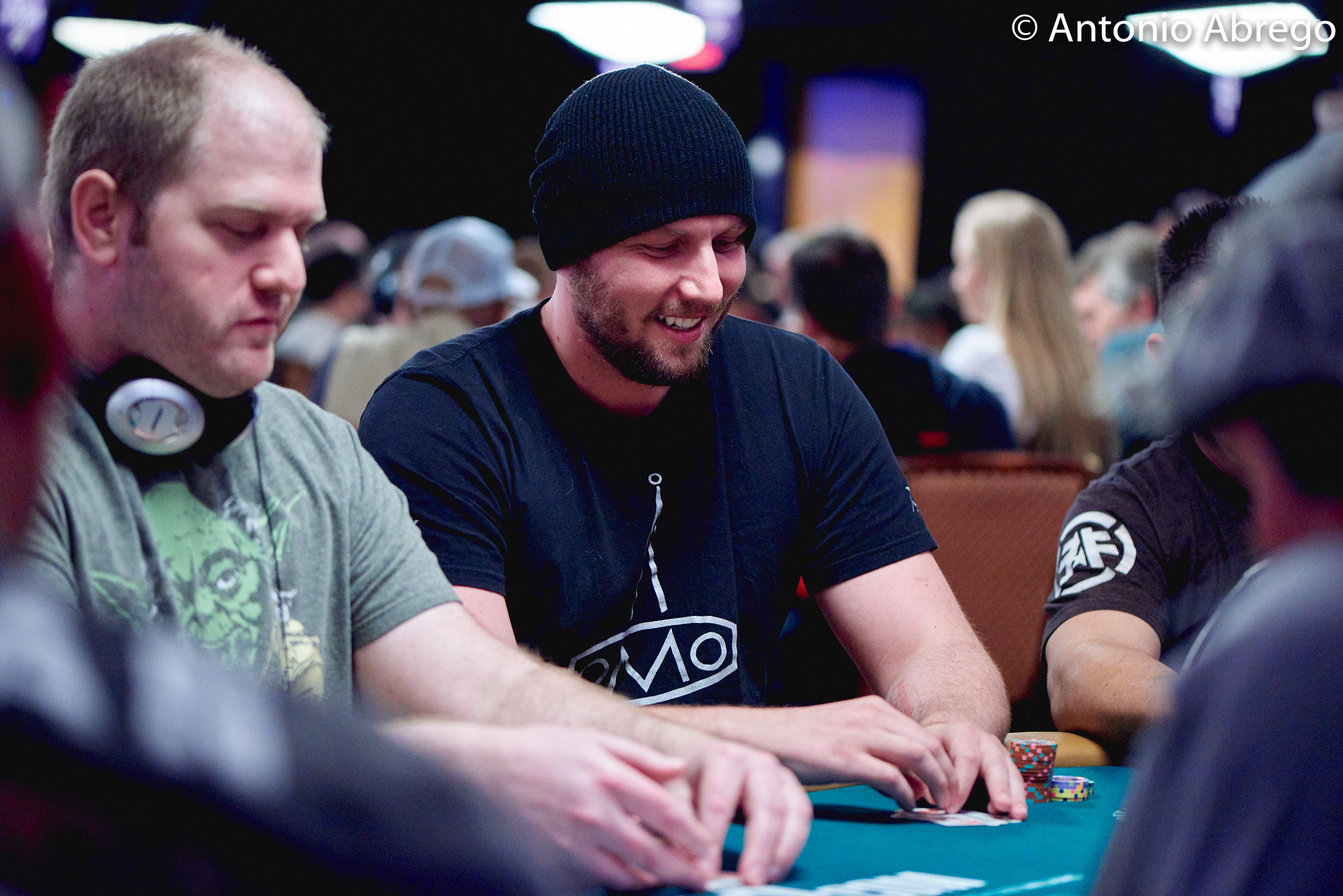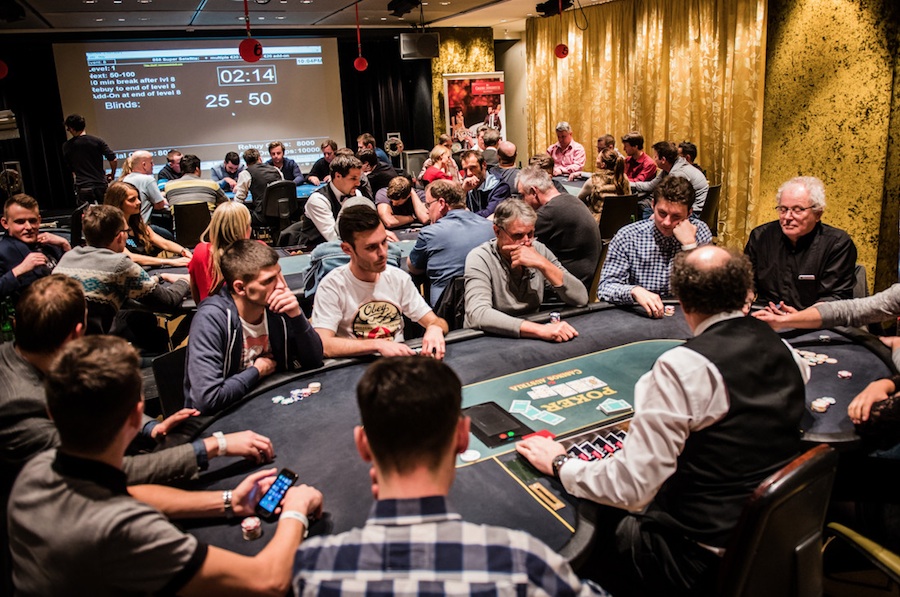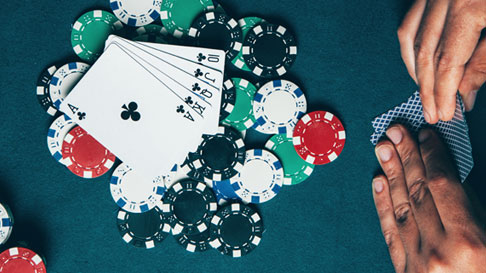Poker Tournament Late Registration Strategy
- Poker Tournament Late Registration Strategy For Real
- Poker Tournament Late Registration Strategy 2020
- Poker Tournament Late Registration Strategy Template
- Poker Tournament Late Registration Strategy 2019
Tournaments with no Late Registration that start with about 25-30 players will have a Guarantee of up to 30 times the entry, whereas the same tournament with Late Registration would have a Guarantee of 50-60 times the entry. Is Late Registration an advantage? There has been much discussion, including Replay Poker’s own forum. Push/Fold Ranges It’s common to become extremely short-stacked at some point during the late stages of a tournament. In most cases, our options will be limited to either shoving or folding when we are first to act. As such, having some type of system for understanding which poker hands to shove can be useful.
Close Out the Win with Late Stage Tournament Strategy
Written by Haunted Poker for exclusive use.
First of all, congratulations on making it to this point in the tournament. You’ve outlasted a good number of opponents, and you’re in the money. At this point, you need to make a push for the final table and eventually first prize. What you do at this point will largely depend on the size of your chip stack in comparison to the blinds, and the type of players at your table. Generally, you should take advantage of your chip lead by putting pressure on the short stacks and if you are the short stack, you should be looking for the best opportunity to shove it all in.
As the tournament winds down and players fight for higher positions in the payout ladder, the blinds usually become astronomical. Not only is this the case with small-stakes online poker tournaments, but it is becoming increasingly standard in casino events as well. This low number of chips in play in relation to the size of the blinds increases the luck element of the game, as it forces players to gamble on hands that they wouldn’t normally incorporate into their strategy.
At all times, you should be aware of how many rounds of blinds you’ll be to able play before you go broke. If you have 4,000 chips left and the blinds are 500/1,000 you’re in a dangerous situation. You can only play 2 or 3 more rounds without improving your chip count. Whenever you’re down to 5 or 6 or less times the big blind, you should be looking for opportunities to go all-in.
You can’t wait much longer for a couple of reasons. Firstly, you want to have enough left to put pressure on your opponents with your all-in. If they all fold to you preflop, you’ve bought yourself another round of play. Secondly, if you just call, you won’t have much left on the flop and you’ll be faced with a tough decision if you don’t connect. Since you’ll already be committed to the pot, save yourself the trouble and go all-in – you won’t have to make any more decisions in the hand. Hands you should consider going all-in with include any pocket pair, a decent Ace, King, or two face cards. Even suited connectors aren’t big underdogs to overcards, so consider making a move. The key is to be aggressive and put pressure on the rest of the table when you’re the short stack.
However, what if you find yourself in the fortunate position of being the chip leader or one of the bigger stacks left in the tourney? You shouldn’t sit back and rely on those chips to coast you to the final table. You’re playing to win, so keep building your stack and allow yourself to remain aggressive. Because you have so many chips, you can afford to gamble a bit with some of the shorter stacks. In tournaments, drawing to straights and flushes too often usually spells disaster. However, I recommend that you bet aggressively when you pick up a draw as a chip leader. If you’re heads-up on the flop and you greatly outnumber your opponent in chips, consider putting him all in with middle pair or a draw. He’ll have to have a very strong hand to risk his tournament life, and most of the time you’ll pick up the pot with your large bet.
Also, you can call all-in gambles from short stacks if you have any pocket pair and you suspect they have something like A-K. You can afford to lose those coin-flip hands, but you’ll be in great position if you come out ahead. The worst thing you can do with a chip lead is to sit on it and allow the blinds to peck away at you. Maintain your lead and at least pick up the blinds every round if possible.
As you work your way to the final table, play usually becomes increasingly sophisticated and tight. If the rest of the table won’t put any chips into the pot and everyone is too timid to risk going out before the final table, punish them. Throw in big raises preflop against weak opponents until someone fights back. Reaching the final table is an imaginary boundary, and since you’re playing to win the whole thing why not exploit their timid play and pick up a few extra blinds?
Once you do reach the final table, you can probably advance a few places just by allowing the maniacs to do their bidding. Many players are content with their final table finish, and will get “chip happy” for a couple of rounds. As the table becomes shorthanded, you should realize that starting hands go way up in value, and you’ll need to play your opponents more than your cards. With less opponents left at the table, the blinds will be coming around much faster.
Now more than ever, you’ll need to open up your play, steal the blinds at opportune times, and look for weaknesses in your opponents. You might consider slowplaying your monster hands, as it is more unlikely that you will be outdrawn in shorthanded play. Study your opponents and the cards they show since you’ll be seeing them in almost every pot. Finally, if you make it to heads-up play, you’ll have to stay aggressive and raise most hands from the small blind to take control. Don’t be afraid to get all your chips in the pot with any Ace, a decent King, face cards, or any pocket pair. The end of the tournament is all about maintaining your chip lead and taking risks when you need to. Exploit a tight table, wait for stronger cards at a looser table, and never reserve yourself to anything less than first prize. My my, you didn’t think that vampires could be so competitive, did you?

Poker Tournament Late Registration Strategy For Real

Poker Tournament Late Registration Strategy 2020
-Why Wait? Pacific Poker is offering our players a 25% instant cash bonus. |
iPoker's forthcoming poker client upgrade, planned to roll out during October, includes a slate of new features and a couple of online poker innovations, pokerfuse has learned.
Bringing the network up to speed with some major competitors, iPoker will soon spread re-entry tournaments. In re-entries, players can buy repeat entries into the same MTT if they bust out within a certain time period. Re-entry will be offered on certain freezeout tournaments.
Also to debut is the much rarer multi-entry tournaments (MET), currently unique to Full Tilt Poker. In METs, players can effectively multi-table the same scheduled tournament, playing multiple chip stacks at separate tables. If a player gets to the fortunate situation of playing more entries than the number of tables that remain, two chip stacks are combined into one.
Both tournament features will roll out on October 7, with MET available in a new “Euro Daily €1,000 GTD” freezeout tournament as well as a weekly money-added tourney, the “€500-Added Sunday Treat.”
Also on the feature list is time banks for cash games. Time banks have been available on iPoker for tournaments for a couple of years, and now players of cash games will have more time to make those trickier decisions. Though a standard option at the majority of online poker rooms, one interesting innovation is a new options menu—players can customize when to automatically use the timebank—always, manual only, or “pot dependent,” which will hit the timebank if the player has voluntarily put money into the pot.
Perhaps the most interesting addition in this client update is support for late registration in SNGs. There are few details on exactly how these will work, and on which SNGs they will be offered, other than that they’ll work similar to registration in scheduled tournaments. Full Tilt is the only poker room to offers something similar, which they title “On Demand Tournaments.”

Poker Tournament Late Registration Strategy Template

Poker Tournament Late Registration Strategy 2019
iPoker has been rolling out new features on a regular schedule this year. It announced support for a more advanced VIP systems in April, added HU rematch and shootout tournaments among other additions in June, and caught attention with a new “heads up hogging prevention” feature for operators in July.
Its biggest change to date is its latest: a new HTML5 client which works on Android and iOS devices. It was quietly rolled out to two skins at the start of the month and is expected to roll out on more rooms soon.